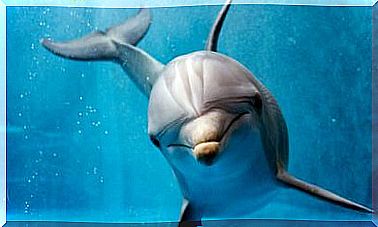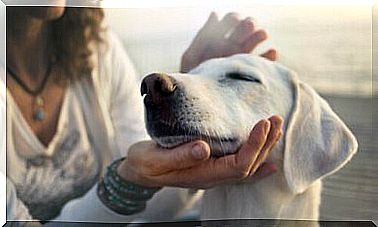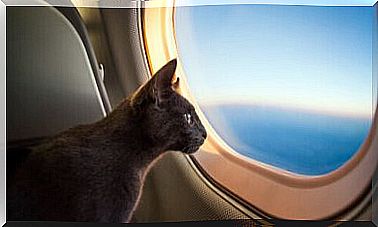The Yacare Caiman, The South American Alligator Up To 3 Meters Long
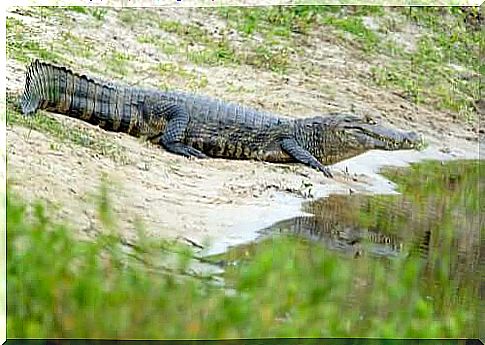
The yacare caiman is a species of alligator native to South America that is part of the Alligatoridae family and from the order Crocodylia. Therefore, its species is related to crocodiles and gharials.
Characteristics of the yacare caiman
The yacare caiman is also known by the name caiman yacare. It is a species that has a long, thin head with a narrower muzzle at the base.
The skin that lines the dorsoventral area of the body is practically waterproof. Another striking feature is the muscular tail of these species.
Regarding the coloration of the species, there are differences between young specimens and adults. Juveniles have an olive green tint with blackish spots. Adults have a darker color tending to black.
The size that males can usually reach is 2.60 meters, but some specimens have been identified that even reach three meters in length.
The reproductive period is characterized by specific mating rituals. The males perform a kind of dance and do pirouettes in the water. This ritual occurs in the summer months. Males who have managed to impress females can get close to them after the dance.
The breeding season is usually between the months of December and April. The female lays 20 to 40 eggs. She places them in a nest that she builds by herself using organic waste and various materials she can find. The nest has a diameter of about 130 centimeters.
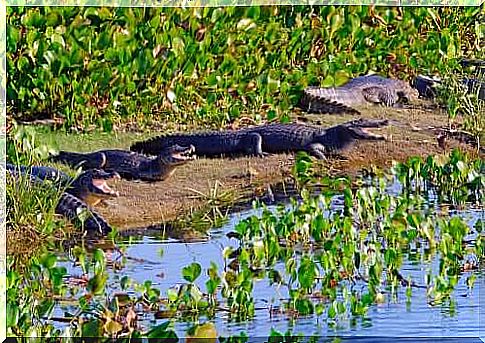
Habitat and distribution of the yacare caiman
Currently, this reptile species resides in several countries in South America. In particular, it can be found in Argentina, Bolivia, Brazil or Paraguay.
The life of alligators, such as crocodiles and gharials, is closely linked to water. In the different locations where they are found, these specimens prefer the clean waters of rivers, estuaries and lagoons.
Yacare caimans sunbathe on the banks of estuaries or rivers. In Brazil they live in peace with the capybaras.
Conservation status of the yacare caiman
Currently the number of individuals that make up the populations of these large reptiles is not known. The main threat that this species has suffered, and which unfortunately still suffers, is hunting for its skin. In the 1970s, the Yacare caiman populations were decimated mainly due to poaching and illegal trade.
In the past, moreover, during the nineteenth century and during the first half of the twentieth century, young specimens were considered a precious hunting trophy. Therefore, they have been included in the category of protected species.
Protection strategies of the species
Governments have put in place various strategies to protect and support the recovery of the species. One of the solutions proposed to protect natural ecosystems is to implement the use of wild species.
With this objective , business strategies have been promoted in which there is an economic advantage in protecting the yacare caiman population.
The breeding
In countries such as Argentina, species conservation strategies such as the “Jacaré Project” have been developed. The goal was egg farming to promote the sustainable use of the country’s wetlands.
The breeding of the eggs consists in recovering them after being introduced by the animals in the nature. Then, they are artificially incubated and the chicks are raised in a controlled environment.
This important project allows to eliminate one of the most critical factors for the survival of the species. The Crocodylia species, in fact, is characterized by a high embryonic mortality. Furthermore, the cubs are easily victims of predation by birds of prey during the first year of life.
But not only. Puppies can also develop stress-related illnesses in response to the cold of the first winter of life or even due to flooding of their nests.
The “Jacarè Project” provides that the puppies, once they have become old enough, are returned to nature. In regions where there is a lower density, a greater number of specimens are introduced.
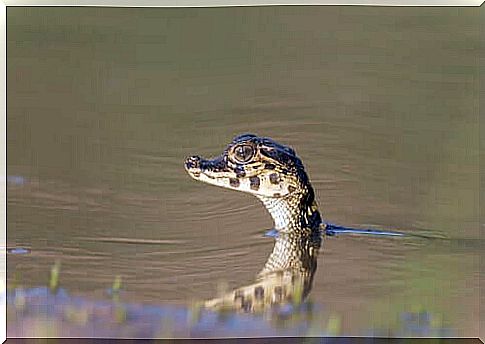
Disturbing factors related to human presence
Among the other measures necessary for the protection of the yacare caiman, there is the protection and surveillance of the areas where the nests are found. It has been observed, in fact, that females tend to abandon their nests due to the various disturbing factors linked to human presence.
One of the most serious man-made disturbances is due to the canalization of estuaries. This practice has resulted in the drying and therefore the loss of habitat of the yacare caiman.
In conclusion, the yacare caiman belongs to a species that, despite having been seriously threatened in the past, today has a low risk of extinction thanks to the numerous protection strategies applied by the governments of the various host countries.
